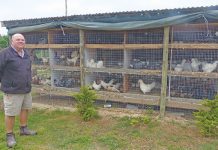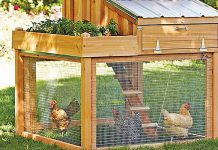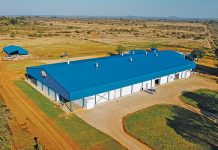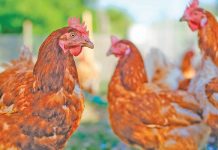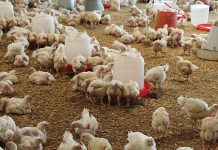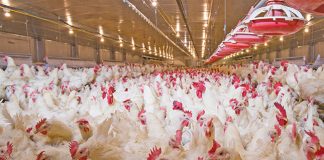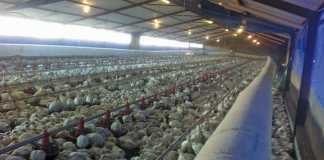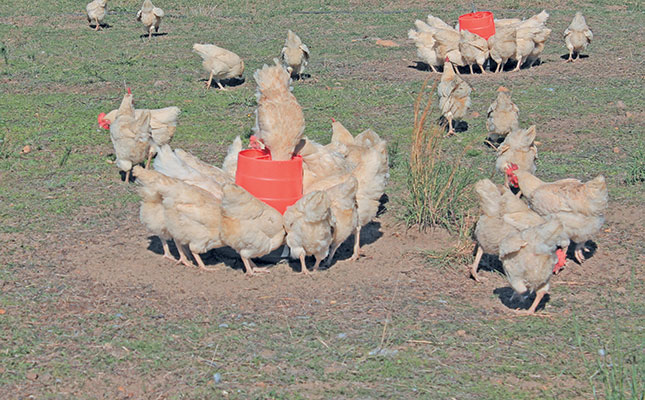
Photo: FW Archive
Eggs are the fourth-largest animal production industry in South Africa after poultry meat, beef and milk. With the country’s per capita consumption at about 140 eggs per annum, it can be profitable to own a layer operation, provided you can supply fresh, safe, top-quality eggs.
Dr Naudé Rossouw, director of Rossgro Eggs, points out that there are certain critical elements that need particular attention in egg production.
He is well-qualified to know: Rossgro is a family-owned business that has two egg-packing stations, one on the Highveld and the other in White River, Mpumalanga, as well as its own rearing farms. Here, day-old chicks are raised to point of lay, and are then transferred to Rossgro’s laying farms. The business produces approximately one million eggs a day, and these are distributed across Gauteng, Limpopo and Mpumalanga.
Proper housing and feeding
The Food and Agriculture Organization of the United Nations’ egg production manual stresses that effective and efficient management techniques are necessary to increase the productivity of the hens and thereby increase income.
These entail proper housing and feeding, as well as appropriate rearing and treatment. To remain sustainable, an egg producer also needs to set both growth and production targets.
According to Rossouw, it is essential to monitor the flocks and houses in order to determine the feed and water intake of the hens and identify potential problems in good time. Staff should be supplied with a preprinted sheet to help them record the overall health and status of the flock every day.
Beverly Mhlabane, CEO and owner of ZAPA farm, an egg production business in Benoni, Gauteng, agrees with Rossouw.

“Diligent monitoring and record-keeping are a must. We record everything that happens in the houses every day. This way, if there are any deviations, we can quickly pick them up and consult our records to determine the cause. The records also help us to plan for the following year,” she says.
Mhlabane is a relatively new entrant in the layer industry. In 2012, she started out as a vegetable farmer with 10 laying hens, but a year later she had 300 layers in her garage. In 2014, she bought a 2ha farm and relocated her hens and vegetables. In 2018, she took a leap of faith and left her career as an engineer to start farming full time.
Her biggest challenge was to secure funding for the infrastructure, and says that obtaining funding “remains a hurdle for any start-up business”.
She did not have a mentor and admits that having one would have made it easier to start her business.
Since 2018, she has installed two 30m x 10m tunnels for vegetable production, as well as two layer units with a capacity for 2 000 and 5 000 hens respectively. She produces around 7 000 eggs a day and delivers to Pick n Pay, Wimpy, a Holiday Inn hotel, a restaurant and spaza shops within a 50km radius of the farm.
Mhlabane grows vegetables on 1,5ha and houses the hens on the remaining land. She uses the chicken manure in the vegetable gardens and tunnels, saying that doing so “reduces fertiliser costs and adds to profitability”.
Overall planning
An egg-laying business demands precise financial and production planning. This includes recording the number of eggs laid by the flock over a specific period, as well as determining when to hatch chicks to ultimately replace birds with diminishing laying capacity. Doing this properly will ensure a constant egg supply to the market.
According to Mhlabane, planning forms the basis of everything she does. “Without planning, everything will fall flat. Planning is the reason I’m successful and why I’m able to grow my business.”
She advises aspirant egg producers to have a vision of where they want to go.
“You have to think of where your market will be, and how you’ll serve it. I recently expanded my layer capacity and made sure to order pullets upfront, so that we’ll be ready to deliver as soon as we start using the new facility. Planning is the most important aspect of my business, “ she says.
Financial management
Comparing expenses and costs with income on a daily, weekly or monthly basis provides useful information and indicates profit or loss. Cash flow is also an important part of financial planning. As a producer, you should be able to pay your suppliers while you wait for customers to pay you.
When calculating costs, bear in mind the following main expenditures:
- Rearing brooders until they become layers;
- Building or maintaining laying and brooder houses;
- The cost of equipment such as feeders, buckets, lights, nests, and staff clothing and protective wear;
- Feed;
- Labour costs incurred to manage birds and pack eggs;
- Vaccinations, medicines and veterinary visits;
- The death of layers from disease;
- Electricity;
- Water; and
- Costs of transporting feed and delivering the eggs to markets and customers.
The laying house
When designing and building a laying house, take local climatic conditions into consideration. A good house should protect laying birds from theft, predation, direct sunlight, rain, excessive wind, dust, heat and cold, as well as sudden changes in temperature.
The inside of the house should be arranged so that it requires minimum labour and time to care for the birds.
The layer production system will determine the equipment needed. There are various production systems:
- A floor-based, deep-litter system, where the floor of the house is covered with bedding material such as straw and wood shavings. Drinkers, feeders and nest boxes are required.
- Free-range production. In this case, the hens still need a safe environment and protection from the elements. The equipment required is the same as for the floor-based system.
- A layer cage system in a house-type structure. The hens are kept in the cages throughout their productive life, and the cages usually have built-in equipment for drinking and feeding, as well as an egg collection system.
Lighting
A hen’s egg production is stimulated by daylight. To increase egg production, artificial lighting can be introduced for two to three hours a day. In closed houses where layers are not exposed to natural light, the length of the artificial day can be set to 16 or 17 hours a day, ensuring constant and maximised egg production.
Hens
Day-old chicks can be obtained from local hatcheries licensed by international breeding companies. Rearing chicks can be expensive and risky, however, so you may wish instead to buy pullets, which are young hens of 18 to 19 weeks that are ready to lay eggs. Make sure the pullets are of good quality and fully vaccinated against most poultry diseases.
Pullets should start laying two to three weeks after purchase. Self-reared birds will typically begin producing eggs in their 20th or 21st week. According to Rossouw, the layer’s production cycle will last between 52 and 62 weeks.
The breed of the laying bird can have an influence on egg production. Certain breeds are more suitable to indoor rearing, whilst others are more suited to free-range situations.
“It’s important to choose the best breed for your specific operation,” advises Rossouw.
Health
Mortality rate is a good indication of the overall health of the flock. The general mortality rate of eight-week-old chicks is about 2%, that of growers between eight and 20 weeks of age is about 3%, and that of layers between 20 and 72 weeks of age is about 7%. The average mortality rate of a flock fluctuates between 5% and 15% a year.
Clearly, the lower the mortality rate, the more profitable the business will be. If you see a rise in the mortality rate, determine the cause as soon as possible and take remedial action. The problem may be disease, predation, feed problems or a high temperature.
Body weight and feeding
In general, the ideal body weight of a hen during the laying period should be around 2kg, although this will vary according to breed. Under- or overweight hens will not lay at an optimal rate, and you will need to manage feeding carefully to achieve the best body weight.
In general, a nutritious, well-balanced diet is essential for cost-effective egg production.
“If you want your hens to lay well, you have to feed them well. Effective nutrition for laying hens begins in the pullet-rearing phase and affects the layer flock’s performance potential. Make sure you obtain feed from a reputable provider of scientifically formulated feeds,” says Rossouw.
Mhlabane says that she, too, does not compromise on feed quality.
“Although the cost is high, you can’t afford to compromise on feed. If you use poor-quality feed, you’ll see lower production. In the end, producing fewer eggs will cost you more than paying for quality feed. You simply have to invest in good nutrition for layers.”
Feeding programmes should be developed according to the specific requirements and circumstances of the flock, and should provide all the required nutrients at every stage of the layers’ development.
“The right amount of feed given at the right time is crucial for the pullets to achieve the recommended target body weight, uniformity and frame development for their age,” says Rossouw.
Daylight hours are also a factor: the longer the daylight, the more the hens will feed. Make sure that feed is always available in the feed troughs, and that the water is always clean.
Feed accounts for approximately 70% of the total cost of egg production. It is therefore crucial to talk to the supplier regarding specific needs and requirements. Products are usually available in meal or pellet form, depending on your preference.
Climate and temperature
The optimal temperature for egg production is between 11°C and 26°C. A humidity level above 75% may cause a reduction in productivity. When the temperature rises above 30°C, the production and quality of eggs decrease. Seasonal temperature increases can reduce egg production by about 10%.
Email Dr Naudé Rossouw at [email protected], or Beverly Mhlabane at [email protected].

